Search Result: 1

MBBS,MS(Orthopedics)
Registration No
Language

8 years experience overall

Gandhinagar , Ahmedabad
Several types of hip osteotomies are performed depending on the specific condition being treated. Some common types include periacetabular osteotomy (PAO) for hip dysplasia, femoral head osteotomy for avascular necrosis, and intertrochanteric osteotomy for certain fractures or deformities.
It is very tough to reverse a lateral osteotomy, especially since it can cause a flat top nose. However, your orthopaedic surgeon would ultimately make this decision based on individual circumstances and factors contributing to the need for reversal.
Yes, you can bend your knee after an osteotomy. However, your ability to fully bend or straighten your knee may be temporarily restricted during the initial recovery period. Physical therapy will help regain full range of motion over time.
A chevron osteotomy is a specific type of osteotomy performed on the foot to correct deformities such as bunions. It involves cutting a V-shaped wedge from the bone and realigning it to improve joint function and alleviate pain.
The eligibility criteria for osteotomy surgery depend on the individual’s overall health, the severity of the condition, and factors such as age and lifestyle. Your orthopaedic surgeon will assess your case to determine if you are suitable for the procedure.
Like any surgical procedure, osteotomy surgery carries some risks and potential side effects. These may include infection, blood clots, nerve damage, and limited range of motion. However, with proper surgical technique and post-operative care, serious complications are rare.
After osteotomy surgery, following your doctor’s instructions for proper wound care, pain management, medication usage, and physical therapy is crucial. Regular appointments will be scheduled to follow up, monitor your progress and make any necessary adjustments to the treatment plan.
The duration of osteotomy surgery depends on the complexity of the procedure and the specific bone being operated on. On average, it may take a few hours to complete the surgery.
The recovery time for osteotomy surgery depends on the type of procedure, the patient’s overall health, and adherence to post-operative care instructions. On average, it may take several weeks to a few months for complete recovery.
Before osteotomy surgery, your doctor will conduct a thorough evaluation, including physical examination, imaging tests, and blood work. You may be asked to stop certain medications or follow specific dietary guidelines prior to the surgery.
While the success rate of osteotomy surgery depends on the condition being treated and individual factors, it is generally reasonable. Most patients experience improved pain relief, joint function, and quality of life.
An orthopaedic surgeon specializing in treating musculoskeletal conditions performs osteotomy surgery. They have extensive knowledge and experience in operating on bones and joints.
There are various types of osteotomy surgery depending on the bone’s location and the procedure’s purpose. Some common types include high tibial osteotomy (HTO), distal femoral osteotomy (DFO), and hip osteotomy.
Osteotomy surgery is a procedure that involves cutting the bone and sometimes adding bone tissue to realign or reshape it in order to correct deformities or redistribute weight in the joints. It is commonly performed in conditions like arthritis, avascular necrosis, hip dysplasia, partial or full hip dislocation, Legg-Calve-Perthes disease, or hip instability.
 Call Us Now
+91 8069991061
Book Appointment
Call Us Now
+91 8069991061
Book Appointment